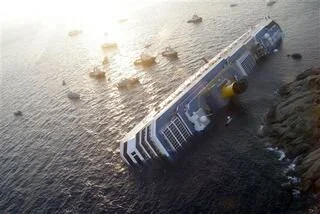Timing is everything
When should the captain of the Costa Concordia cruise ship have checked charts and water depth and had the crew carefully watch for underwater obstacles? Obviously, when approaching the island off of which it hit the underwater rocks!
When should Eastman Kodak have fully committed to digital photography? In hindsight, years ago when it first developed the technology. By not doing so it took the road to failure. (Here's a Forbes article on Eastman Kodak's strategic failure.)
When should companies in the nuclear power industry have revisited their strategic plans in the wake of the Tōhoku earthquake and tsunami and Fukushima Daiichi nuclear disaster? Immediately, of course.
The speed of strategy is not related to calendar time. Timing for the right market move, investment or shift in focus is predicated on opportunity or threat, and ability, not the start of the quarter or year. Sometimes the need for commitment to or change in strategy is slow in developing, other times it arises lightning fast.
The annual budgeting and resource allocation cycle is of course a key step in plan implementation. But it should not drive the strategic planning process. Finding winning strategies and getting on the road to implementing them should be driven by opportunity, need, threat, change, competition and other similar factors. Like budgeting, planning should be recurring, but just making it a rote process ahead of budgeting disconnects it from the events that make planning so important. Fundamentally, the time to plan is when you either don't have strategies that are pulling you to an idealized future vision for the organization or when your strategies are not longer effective or appropriate.
The blogosphere offers many telling observations about the importance of timing in strategy formulation:
Steve Tobak observed in a CBS News business blog post: "Unfortunately, even some of the best and brightest managers and business people consider timing as an afterthought. Their thinking goes something like this: 1) idea, 2) budget, 3) target customers or audience, 4) competition, ... , 27) timing. I have no idea why, but it's true. And sad. Really."
Leon Gettler wrote in Smart Company: "Invariably, strategies get overtaken by events, market forces, demography, changing consumer patterns and new laws. [Tim Gullifer, a partner at Deloitte Private] says businesses need to follow one rule: fail quickly, fail cheaply. 'If it's not working, then realise it's not working and make some changes to your strategy so that you can get it back on track. Don't let it fail for too long because then it disengages your customers and your people.'"
Venkatesh Rao, author of Tempo: Timing, Tactics and Strategy in Narrative Decision Making,has blogged::"The apparently logical sequence, ready, aim, fire describes a feedforward model. You get your mind in the right place, then you figure out how to be effective (aim can map to waterfall planning at any level), then you take action. The phrase ready, fire, aim, preferred by the action-oriented in uncertain and dynamic environments, is a response to the analysis-paralysis that can happen if you try to get to ideal starting conditions and perfect information before starting to act. The absurdity of aiming after firing can only be resolved via appeal to the logic of iteration and feedback. You converge on the successful course of action through feedback from failed actions. This works well as a motto for startup types and others who believe in the release early and often, and fail fast approach to projects."
The important take-away is that strategy formulation should be driven by need and opportunity, not by the budget cycle. Strategy formulation should be dynamic, not bureaucratic, if it is to be most helpful in pushing the organization to greater success and away from disaster.

